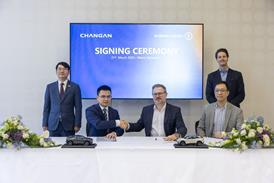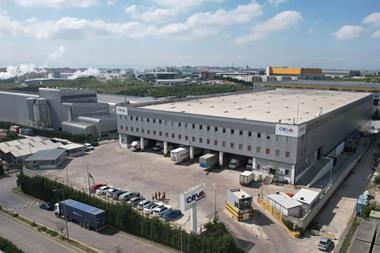
That old watchword collaboration was on the lips of carmakers, suppliers and logistics providers alike as they gathered for the Automotive Logistics Global conference in Dearborn, Michigan this week.
The conference, which began on Monday with attendee numbers that confirmed an automotive industry very much on the rebound from the economic downturn – with more than 300 delegates – kicked off two days of discussion with a debate on the economic changes and market trends that are shaping supply chain management. For speakers, including Gene Tyndall, executive vice president of supply chain services provider Tomkins International, it was very much a case of keeping your eye on the ball as the sector continues to receive mixed signals from recovering global markets. He pointed out that demand remained an uncertain factor, with 7% growth forecast for global sales in 2011, down from this year’s projected 10% figure equal to 70.4m units sold.
The North American market has continued to recover in the first nine months of the year, with sales tracking about 10-15% higher than the 10.4m sold in 2010. But the days of 17m units of sales and production annually do not appear to be in the short to medium term forecasts for many carmakers or providers. Rather, supply chains need to be adapted to leaner, smarter models. "The push production model is gone," said Toyota's Mike Nelson, responsible for highway transport of vehicles. "Dealer inventories are lean and balanced, as we carry less inventory and maintain lower incentives."
Ford's Stephen Harley, global executive director of material planning and logistics, implied that the entire supply chain needed to adapt across the entire order-to-delivery process, where carmakers like Ford have reduced complexity, increased global platforms and parts sharing, while simultaneously pushing down component and vehicle inventory levels.
But as automotive players make tentative steps forward over this still uncertain and changing terrain, there was evidence that manufacturers are still not sharing enough information for providers to plan capacity levels and to best adapt to the pull supply chain. Tyndall spoke for many when he said “we don’t have enough collaboration” and backed the point up with figures from a study that showed 68% of shippers were looking for more of it, as were 80% of logistics service providers. But the industry remains its own worst enemy. “There is not enough evidence of OEMs sharing knowledge with LSPs,” said Tyndall, in large part, he said, because many are precious about the knowledge they have and consider it a proprietary asset. What many still need to learn, however, is that there are ways around the sharing of sensitive information.
This was something picked up in one of the 12 breakout workshops at this year’s conference that focused on the different requirements tier suppliers and carmakers have when it comes to supply chain management. Automotive players need to get over this hurdle of overprotecting valuable information from supply chain partners, particularly long-term plans for two years or longer, said delegates such as WWL's John Felitto. This is especially important as suppliers are now being challenged to obtain an OEM level of control over inventory movement while supply chains are still largely being managed separately, according to Ceva Logistic’s senior vice president, Jeffrey Hurley. But he said there was scope for integration, with suppliers sharing OEM supply chains and collaboration through crossdock networks, something Ceva has had success with, while managing to reduce cost and improve transit times in the process. This was reiterated by Carter Logistics’ vice president of marketing and business development, Lorri Lord, who cited the company’s success in providing a shared logistics solution for Tenneco and ArvinMeritor in their inbound supply to Nissan.
Outbound, the disjoint in areas of communication such as forecasting has in part led to a significant cull in truck and driver capacity from which the industry may take years to recover from. Toyota's Nelson revealed that the number of car transporters in the US dropped from 13,000 in peak volume, to about 8,000 trucks in use this year. "Aside from maybe a 1,000 units, these trucks are not sitting on the fence in storage - they are gone, and there isn't enough financing and investment out there to get them back quick, especially if we see a sales spike," he said.
Despite operational bottlenecks such as this, the sentiment expressed by most carmakers and providers was upbeat. Although among the optimism, there was at least one warning expressed on a more existential level. More collaboration is certainly going to be needed if Paul Bender’s dire warnings of global catastrophe are anything to go by. The eponymous president of consultancy P.S. Bender & Co. warned delegates labouring under the illusion that they operated in an ever converging, globalised industry that sudden tensions beyond the market's control could lead to government control of economies or market collapse in the fallout from wars or further financial disaster. He added that the most recent economic crisis could just be a rehearsal for an even greater one just round the corner.
The Automotive Logistics Global conference continues today and a full report will be online later this week (www.automotivelogisticsglobal.com).






































